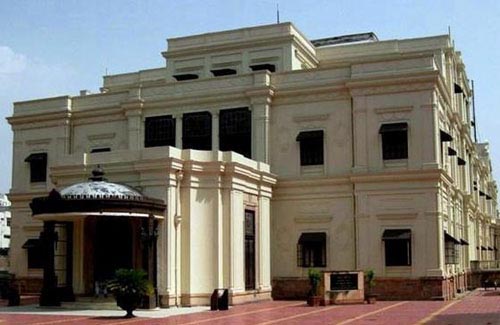Lal Bagh Palace

Information on Lal Bagh Palace (Indore, Madhya Pradesh) - History & Architecture
Lal Bagh Palace is a magnificent building in Indore. It is located towards the Southwest of the town on the outskirts. On the bank of the River Khan, it is a three storey building. During 1886-1921, this palace was built in a successful manner by Maharaja Shivaji Rao Holkar. It is rightly situated amidst dusty and dry gardens; it is really architecturally similar to the New Palace of this region. In the past and present, this particular Palace hosted several royal receptions and reflects the taste and life style of the Holkar Rulers. It is one of the most sought after tourist destinations among the domestic and foreign tourists throughout the year.
Lal Bagh Palace Architecture
It is regarded as best stylish residence in India because of its unique style of construction. The palace largely exhibits contemporary Italian and Indian sculptures and paintings to a great extent. On the ground floor, the entrance hall is in marble plus displays perfectly prehistoric artifacts. On the first floor, there is a coin collection centre which really dates back to the Muslim period in India. The interiors of the place rightly transport the visitors to the era of historical periods. It is to be remembered that the aesthetic sensibility of the later Holkars and highly westernized outlook are reflected from the decoration and architecture of this particular palace.
Lal Bagh palace is filled with stuffed leopards and tigers, lavish decorations in the style of Versailles Palace, Italian style wall paintings, Italian marble columns, Greek mythological reliefs, grand chandeliers, flying nymphs on the ceiling, rich Persian carpets, Belgium stained glass windows gives the visitor an out of the world feel and experience. On springs for extra bounce, the palace ballroom has wooden floor mounted. On the opposite bank of the river, the kitchen was well built. It is to be highly noted that the palace was connected to the kitchen through underground tunnel that is well lighted. The palace gates are a replica of the Buckingham palace gates in London. These gates were shipped from England and molded in cast iron. Each and every gates of the palace carried the Holkar state emblem that states "He who tries will succeed".
Lal Bagh Palace History
The construction of the palace began in 1886 under Tukoji Rao Holkar II. It was carried out in three phases and the final phase was completed in 1921 under Tukoji Rao Holkar III. This kind of palace is really unique in Asia. The palace rooms have at present been furnished and restored, it has been converted into a museum in order to showcase the bygone era of this region. Most of the ornamentation and furniture seen there directly belongs to early Georgian style and late Regency. The major attractions of this majestic building are the accurately furnished and proportioned rooms with wonderful carvings on the ceilings and walls. The last resident of this splendid palace was Tukojirao III. In 1978, it was inhabited by the Holkars.
Lal Bagh Palace Tourism Importance
Lal Bagh Palace is developed as a cultural centre by the Government of Madhya Pradesh. The palace premise largely boasts one of the finest rose gardens in India. The entire complex is spread on 28 acres area. Domestic and foreign tourists can visit this Palace between 10:00 am and 05:00 pm everyday on nominal charges, except Monday.
- Andaman Nicobar Monuments
- Andhra Pradesh Monuments
- Assam Monuments
- Bihar Monuments
- Chhattisgarh Monuments
- New Delhi Monuments
- Goa Monuments
- Gujarat Monuments
- Haryana Monuments
- Himachal Pradesh Monuments
- Jammu and Kashmir Monuments
- Karnataka Monuments
- Kerala Monuments
- Madhya Pradesh Monuments
- Maharashtra Monuments
- Odisha Monuments
- Punjab Monuments
- Rajasthan Monuments
- Tamil Nadu Monuments
- Telangana Monuments
- Uttar Pradesh Monuments
- West Bengal Monuments